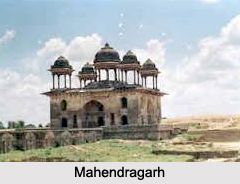 Early History of Rajasthan was carved out from Indus Valley Civilization. The ancient civilized history of Rajasthan goes back to 5,000 years ago when the present day districts of Jhunjhunu and Sikar along with other areas of Jaipur district bordering south Haryana formed the part of Vedic state of Brahmavarta along with districts of Mahendragarh and Rewari in Haryana.
Early History of Rajasthan was carved out from Indus Valley Civilization. The ancient civilized history of Rajasthan goes back to 5,000 years ago when the present day districts of Jhunjhunu and Sikar along with other areas of Jaipur district bordering south Haryana formed the part of Vedic state of Brahmavarta along with districts of Mahendragarh and Rewari in Haryana.
Rajasthan in Veda Era
The Vedic Era Rajasthan falls in modern day Haryana and Pakistan. The Vedic hermits started composing Vedic scriptures, which form part of Sanatan Dharma, the base of present day Hinduism. These Vedic scriptures are revered by Saraswati and Drishadwati Rivers formed by the then Brahmavarta state.
Drishadwati in Early Rajasthan
Drishadwati river is identified as the Vedic Drishadwati by Bhargava. Some parts of Rajasthan may have been occupied by the Indus Valley Civilization. The excavations at Kalibanga in northern Rajasthan around 1998 revealed the existence of human settlements of Harappan times on the banks of a river that dried up later, which some people believe to be the Saraswati. Archaeologists hope the Saraswati will unlock mysteries of the past. Rajasthan"s geographic position in India has caused it to be affected by the expansionist efforts of various empires. It was a part of the Mauryan Empire around 321-184 BCE. Later it was in Guptas, Rashtrakutas and the tribal population of Rajasthan. Later, the Rajputs came into existence and formed a royal hierarchy till modern age.
Emergence of Rajput Clans
Rajput clans emerged and held their sway over different parts of Rajasthan from about 700 AD. Before that, Rajasthan was a part of several republics. It was a part of the Mauryan Empire. Other major republics that dominated this region include the Malava Dynasty, Arjunya Dynasty, Yaudhya Dynasty, Kushana Dynasty, Saka Satrap Dynasty, Gupta Dynasty and Hunas.
Rajputs in 8th to 12th Century AD
Rajput clans ascendancy in Indian ancient history was during the period from the eighth to the twelfth century AD. The Pratihar Dynasty ruled Rajasthan and most of northern India during 750-1000 AD. It was in between 1000-1200 AD, Rajasthan witnessed the struggle for supremacy between Chalukyas, Parmars and Chauhans. Later during the rule of Delhi Sultanate and Mughal Dynasty, Rajputs began political clashes for freedom. Later, during the time of Akbar, Rajputs became the friends of Mughal kings till its decline in 1707.



















